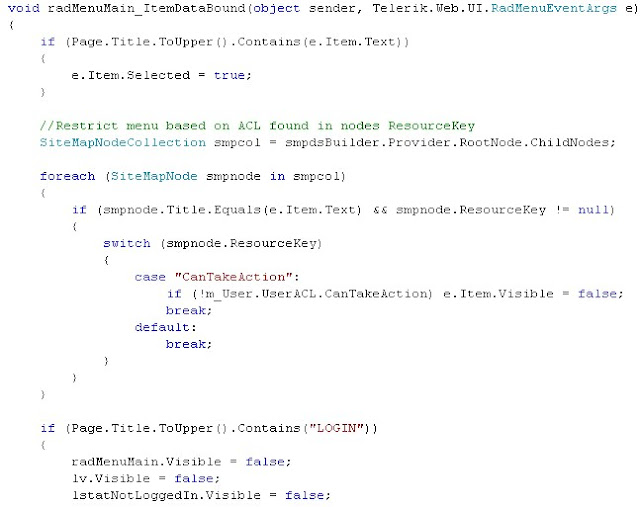Using ASP.NET Membership Provider with an ACL
Posted
by geekrutherford
on Geeks with Blogs
See other posts from Geeks with Blogs
or by geekrutherford
Published on Mon, 31 Jan 2011 16:20:55 GMT
Indexed on
2011/01/31
23:27 UTC
Read the original article
Hit count: 338
Up until recently one of my applications has used the membership provider within ASP.NET exclusively. However, it has been proposed that while the currently defined roles are beneficial, security needs to be more granular to restrict both access to certain pages and functionality present within a given page. Unfortunately, the role based security ASP.NET gives you out of the box falls down in this area. This is not due to a lack of foresight by Microsoft, but rather it was simply not designed for implementing both role based security and any inherent ACL you may define within these roles. Mind you some would say an ACL is independent of the role to which a user belongs and is assigned to the user directly. The application mentioned here has it's own User object (which encapsulates the membership provider user object as a property) and SQL Server table to store extended information not present in the aspnet_users table. While I could have modified the aspnet membership schema to suit the applications needs, it seemed smarter to simply create a separate table with a foreign key back to the aspnet_users table. Since I have a separate object to store extended user information, I simply created an ACL object and expose it as a property of my user object. This is all well and good, but it does not help in regards to the SiteMapProvider and restricting access at the page level based on the users ACL. The straightforward answer would be to develop some code within the databound event for the menu that checks the page title and has hardcoded logic that dictates a user must have certain permissions turned on. The problem with this approach is that it's HARDCODED!!! If you need to change access to a page you'd need to do a build and go through your normal deployment process....ugh!!! An alternative method, albeit not perfect, is to utilize the resourceKey property on the SiteMapNodes in the SiteMap file with the name of the required permission to view the page. Within the databound event for your menu you iterate the SiteMapNodes in the menus SiteMapProvider looking for a match at the page level based on title. When a match is detected, you have a switch/case on the SiteMapNodes resourceKey (the name of the ACL permission required). The case for the resourceKey ensures the users ACL permission is turned on and viola!!! This is noteably not perfect in that it is using the resourceKey in a manner other than intended. Since the application is not localized, using it in the manner described it not an issue. Below is a sample SiteMap file with the resourceKey used as the ACL permission identifier: Below is the ItemDataBound event. This application uses the Telerik Menu control:
© Geeks with Blogs or respective owner

